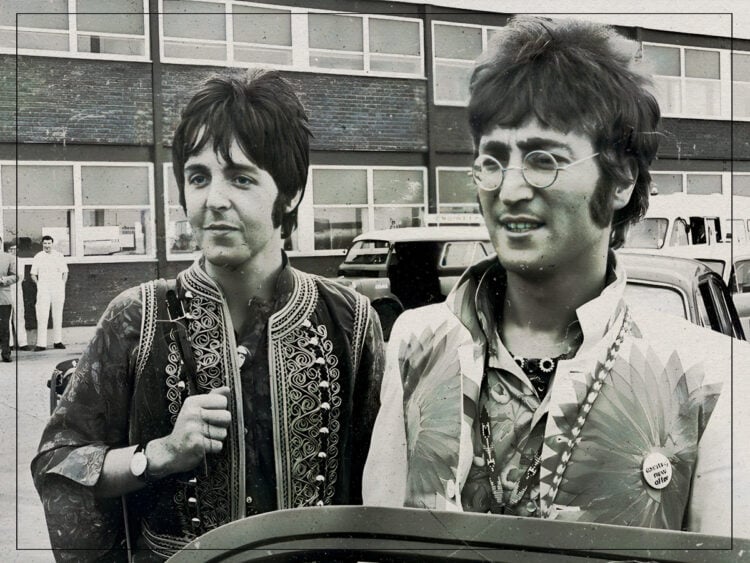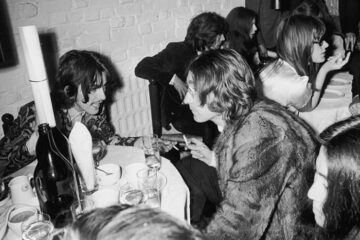In the early 1960s, The Beatles treated screaming teenagers to a sumptuous selection of romantic compositions. By 1964, practically every British female under 30 wanted to hold John Lennon’s hand and please Paul McCartney. Thanks to an appearance on the Ed Sullivan Show in February 1964, the young Liverpudlians soon conquered the world, bringing a new dimension to the rock ‘n’ roll tradition as popularised in the 1950s.
Inspired by Bob Dylan, Beat literature, cultural enlightenment, and consciousness-expanding drugs, The Beatles changed dramatically through the mid-1960s. The Lennon-McCartney songbook now accommodated all manner of barmy topics, from yellow submersibles to a perforated city in Lancashire. One could say the group had matured from its foundation in courting lovesongs, but with psychedelia came marvellous absurdity, often courtesy of John Lennon.
The extent to which LSD-inspired songs like ‘Lucy in the Sky with Diamonds’ and ‘I Am the Walrus’ is still up for debate, but we can all agree that Lennon had an eye for the oblique. Lines like, “A soap impression of his wife which he ate / And donated to the National Trust” seemed to have little grounding in reality, but these abstract gems almost always had a tangible backstory. That particular line was an extract from ‘Happiness is a Warm Gun’, which Lennon wrote using various newspaper stories inspired by William S. Burroughs’ cut-up method.
Elsewhere, the Eggman in ‘I Am the Walrus’ was a nickname for Eric Burdon, the lead singer of The Animals, while ‘Lucy in the Sky With Diamonds’ took inspiration from a painting by Lennon’s first son, Julian. So, turning our attention to the Magical Mystery Tour classic ‘Strawberry Fields Forever’, we can deduce that Lennon had a specific place in mind when writing these lyrics.
In the similarly pioneering music video for ‘Strawberry Fields Forever’, we catch up with the fabulous four-piece on a verdant pasture in Knole Park, Kent. Central to the scene is an ancient tree, isolated in its field. The opening lyric of the second verse, “No one I think is in my tree”, appears to tie the narrative to this scene in Kent, but Lennon’s Strawberry Fields were, in fact, a few hundred miles to the north.
Deceptive as the trippy music video might be, Lennon returned to his childhood in ‘Strawberry Fields Forever’, as did McCartney in its A-side companion ‘Penny Lane’. “‘Strawberry Fields’ is a real place,” Lennon revealed in a 1980 interview with Playboy. “It’s a nice name. After I stopped living at Penny Lane, I moved in with my aunt, who lived in a nice semi-detached place with a small garden and doctors and lawyers, and all that, all living around. Not the poor, slummy kind of image that was projected in all The Beatles’ stories.”
“Near that home was this Strawberry Fields, a house near a boy’s reformatory where I used to go with my friends Nigel [Whalley] and Pete [Shotton],” he continued. “We would go there and hang out and sell lemonade bottles for a penny. We always had fun at Strawberry Fields, so that’s where I got the name. But I used it as an image. When I was writing ‘In My Life’, I was trying ‘Penny Lane’ at that time. We were trying to write about Liverpool, and I just listed all the nice-sounding names, just arbitrarily. But, Strawberry Fields, I mean, I have visions of Strawberry Fields…Strawberry Fields is anywhere you want to go.”
The real Strawberry Fields became symbolic of Lennon’s tumultuous youth and, more palpably, a place of divine escape. “It’s just about me, really, or anybody else, who’s thinking like that,” Lennon continued. “It’s pretty straightforward. It’s a bit of messing, let’s get away to Strawberry Fields. Certain parts of the song are fantastic to me, especially when you’re doing it, but then after that, you listen to it objectively. ‘Living is easy…misunderstanding all you see.’ It still goes, doesn’t it? The awareness apparently trying to be expressed. Let’s say, in one way, I was always hip. I was hip in kindergarten. I was different from all the others. I was different all my life.”
In a 1970 interview recorded in Steve Sullivan’s book Encyclopedia of Great Popular Song Recordings, Lennon described ‘Strawberry Fields Forever’ as one of his most honest songs. He also discussed a psychoanalytic objective to the oblique lyrics. “‘Strawberry Fields’ was psychoanalysis set to music, really,” he said. “I think most analysis is just symptomatic, where you just talk about yourself.”
“I don’t need to do that because I’ve done a lot of it with reporters. I never had time for psychiatrists and those people because they’re all cracked. Instead of penting up emotion or pain, feel it – rather than putting it away for a rainy day. I think everyone’s blocked. I haven’t met anybody that isn’t a complete blockage of pain from childhood, from birth on. Why shouldn’t we cry? They tell us to stop crying about twelve: ‘Be a man.’ What the hell’s that? Men hurt,” he added candidly.
As for the line, “No one I think is in my tree,” Lennon illustrated his feeling of isolation among childhood peers. “The second verse goes, ‘No one I think is in my tree,’ well, I was too shy and too doubting. ‘Nobody seems to be as hip as me,’ is what I was saying. Therefore, I must be crazy or a genius!“




